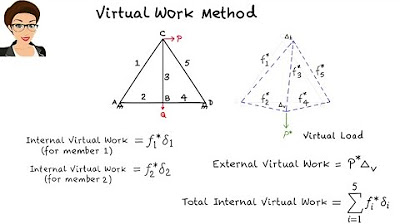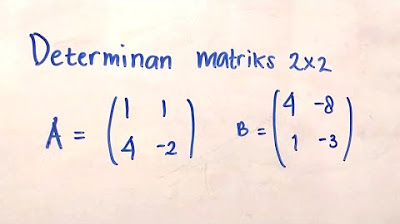ANALISA STRUKTUR 2 KONSEP DASAR MATRIKS FLEKSIBILITAS#flexibilitymatrix#Flexibility#matrix
Summary
TLDRIn this educational video, the presenter introduces the flexibility matrix method, a vital tool in structural engineering. The method focuses on calculating displacements in statically indeterminate structures using matrix equations that relate forces and displacements. Key concepts include the compatibility principle, where displacements are determined based on applied forces, and the inverse relationship between stiffness and flexibility. The video explores practical applications of this method in structures like cantilever beams under various loads. It concludes with a call to action for viewers to engage further with the channel for additional lessons on structural analysis.
Takeaways
- 😀 The lecture focuses on the concept of flexibility matrix methods in structural engineering.
- 😀 The flexibility matrix method is used to analyze and calculate forces and displacements in a structure, particularly when forces are applied to it.
- 😀 One of the key principles discussed is the compatibility of displacement and the importance of the reaction forces and displacements in solving for unknowns in structures.
- 😀 The lecture touches on the concept of statically indeterminate structures, which cannot be solved using only static equilibrium equations.
- 😀 The relationship between flexibility and stiffness is emphasized, highlighting that flexibility is the inverse of stiffness.
- 😀 The key equations in the flexibility method involve calculating displacements and the resulting forces in the system based on compatibility and equilibrium principles.
- 😀 The method involves calculating the deformation of the structure, considering factors like axial force, bending moments, and shear forces.
- 😀 The lecture also introduces the idea of stiffness and flexibility matrices, used to compute displacements and forces in a structural system.
- 😀 An example problem is presented, involving a cantilever structure with a load and bending moment, to demonstrate how the flexibility matrix method is applied.
- 😀 The overall objective of using the flexibility matrix method is to find the relationship between force and displacement in structures, allowing engineers to design and analyze complex systems more accurately.
Q & A
What is the focus of today's discussion in the video?
-Today's discussion focuses on understanding the basic concepts of the matrix method for flexibility, including the relationship between flexibility and stiffness in structural engineering.
What is the primary variable in the matrix method for flexibility?
-In the matrix method for flexibility, the primary variable is the force or reaction forces and the internal forces within the structure, which are initially unknown and are the focus of calculation.
What principle does the method of matrix flexibility rely on?
-The method of matrix flexibility relies on the principle of compatibility, where displacements are calculated after determining the forces. This principle ensures that deformations are consistent with the structure's constraints.
What is the role of displacement in this method?
-Displacement plays a crucial role in the matrix flexibility method. After calculating the forces, displacements are derived to ensure that the structure's deformations meet compatibility requirements.
What is the relationship between flexibility and stiffness?
-Flexibility and stiffness are inversely related. Flexibility is associated with the ability of a structure to deform under load, while stiffness refers to the resistance to deformation. The relationship is that as flexibility increases, stiffness decreases, and vice versa.
What does the term 'degree of static indeterminacy' mean in the context of this method?
-The degree of static indeterminacy refers to the number of unknown forces or displacements that cannot be determined from static equilibrium alone. This concept is crucial in analyzing structures with more unknowns than equations.
How is the relationship between force and displacement represented in the matrix method?
-In the matrix method, the relationship between force and displacement is represented by the flexibility matrix. Displacements are calculated by multiplying the flexibility matrix by the applied forces, ensuring compatibility and equilibrium in the structure.
What is the difference between the flexibility and stiffness matrices?
-The flexibility matrix relates the displacements to the applied forces, while the stiffness matrix relates the forces to the displacements. They are inversely related: a higher flexibility matrix value means lower stiffness and vice versa.
What key equations are used in the flexibility method?
-The key equations used in the flexibility method are the deformation equations, equilibrium equations, and compatibility equations. These form the basis for solving for unknown forces and displacements in a structure.
How does the matrix method apply to a cantilever structure under load?
-For a cantilever structure under load, the matrix method is used to determine the displacement and internal forces. The flexibility matrix is applied to calculate the displacement for each load applied, considering the structure's stiffness and the applied moments.
Outlines

This section is available to paid users only. Please upgrade to access this part.
Upgrade NowMindmap

This section is available to paid users only. Please upgrade to access this part.
Upgrade NowKeywords

This section is available to paid users only. Please upgrade to access this part.
Upgrade NowHighlights

This section is available to paid users only. Please upgrade to access this part.
Upgrade NowTranscripts

This section is available to paid users only. Please upgrade to access this part.
Upgrade Now5.0 / 5 (0 votes)





